By Scott R. Moscow, OD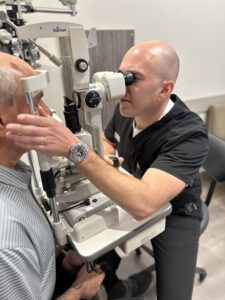
August 9, 2023
There were many changes to the 99XXX codes in 2021. Here are key points to be aware of as you use these to code your patients’ visits.
2021 Changes
- Deletion of CPT Code 99201
- Eliminate History and Exam Elements for Code Section
- Allow Physicians to Choose Whether Their Documentation is Based on Medical Decision Making (MDM) OR Total Time
- NOT Both!
- Modifications to the Criteria For Medial Decision Making (MDM)
- Creation of a Shorter Prolonged Services Code – 99417 (15-minute increments)

99XXX are defined as office or other outpatient visit for the evaluation and management of a patient, which requires a Medically Appropriate History and/or Examination and Medical Decision Making.
Note: Although History and Exam Elements criteria were eliminated from the code section in 2021, a “medically appropriate” history and exam elements must be taken/performed and documented.
When choosing a 99XXX code, you can make the decision based off Time OR Medical Decision Making (NOT Both). For our examples today, let base off Medical Decision Making (NOT Time).
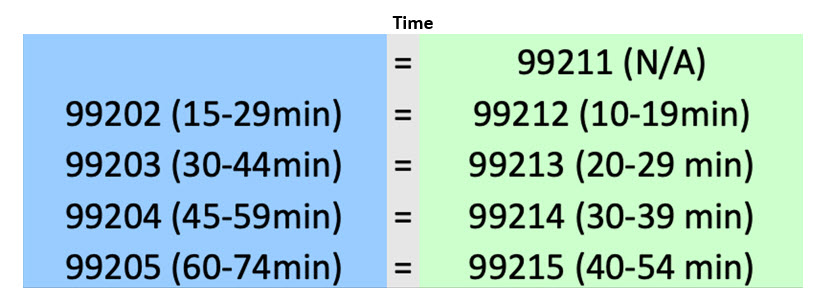
Level of Medical Decision Making
When determining Level of Medical Decision Making there the following three categories. The exam must meet the criteria in two of the three categories to justify each 99XXX code:
- Number and Complexity of Problems Addressed
- Amount and/or Complexity of Data to be Reviewed and Analyzed*
- Risk of Complications and/or Morbidity or Mortality of Patient Management
*For most Optometrists, Amount and/or Complexity of Data to be Reviewed and Analyzed does NOT apply.
For our examples today, we will use Number and Complexity of Problems Addressed AND Risk of Complications and/or Morbidity or Mortality of Patient Management. Therefore, we must meet the criteria of BOTH to justify each level of 99XXX code.
- Number and Complexity of Problems Addressed
- Risk of Complications and/or Morbidity or Mortality of Patient Management


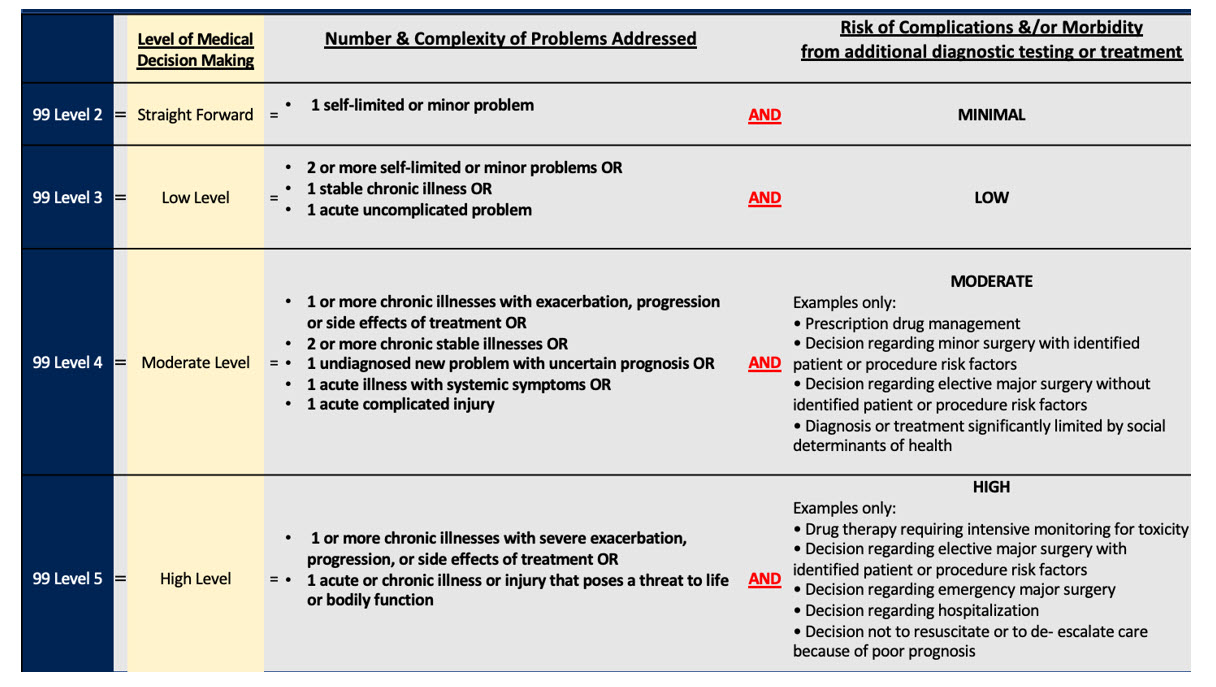 Identified Patient or Procedure Risk Factor
Identified Patient or Procedure Risk Factor
Identified patient or procedure risk factors for THAT Procedure.
Note: a patient having diabetes does NOT automatically make a patient high risk for everything.
Social Determinants of Health (per WHO)
Non-medical factors that influence health outcomes. Conditions in which people are born, grow, work, live and age. The wider set of forces and systems shaping the conditions of daily life. When appropriate, use codes Z55-Z65 and Z75 Codes to communicate Social Determinants of Health to the insurance company.
Other Articles to Explore
Definitions
Morbidity: The condition of suffering from a disease or medical condition, having a disease or a symptom of disease or medical problems caused by a treatment.
Chronic: Lasts three months or more (The Center for Disease Control says lasts one year or more). Generally, it cannot be prevented by vaccines or cured by medication.
Minor Surgery: Global period of less than 90 days.
Major Surgery: A global period greater than or equal to 90 days.
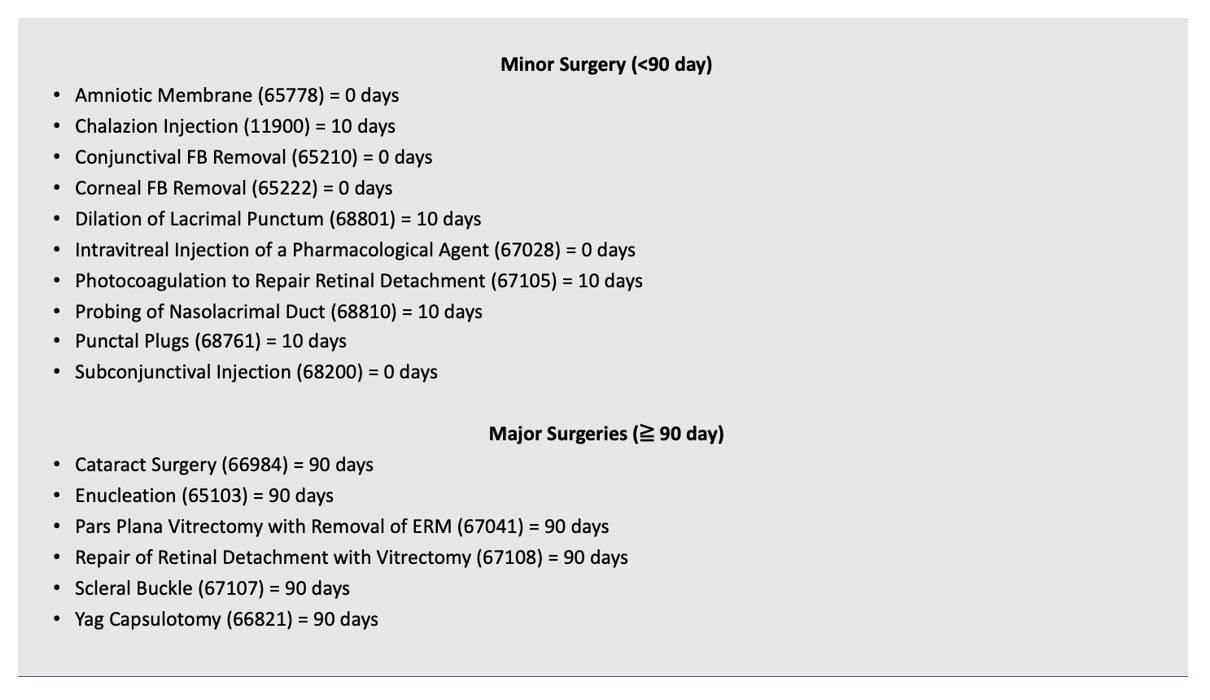
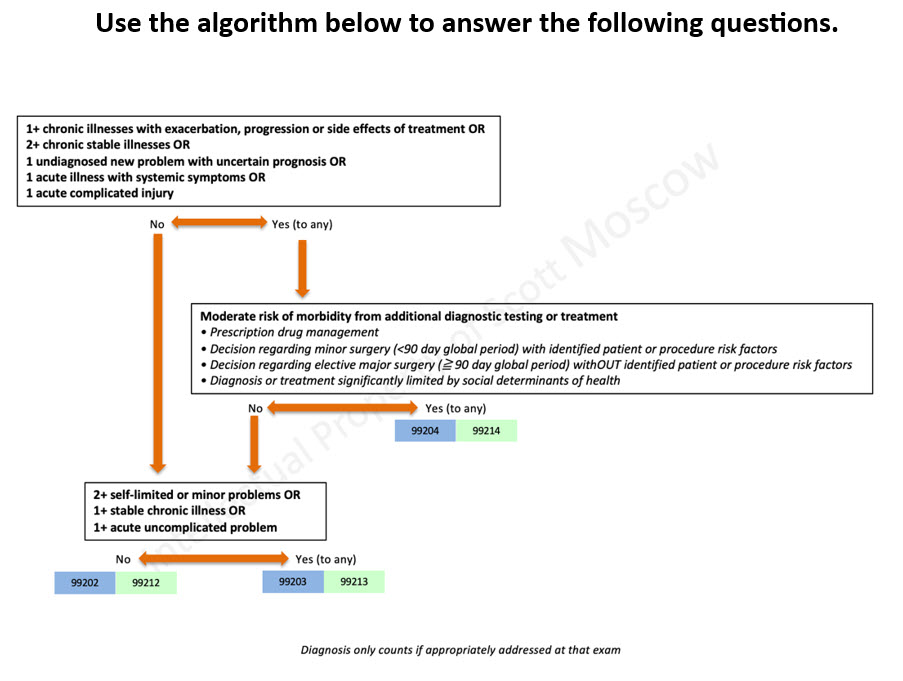
Note: Generally, “99 Level 5” are rarely used in optometry. Therefore, I have excluded “99 Level 5” from the algorithm. However, there may be circumstances where it’s appropriate to bill a “99 Level 5.”
For the examples below, assume the following items:
- Existing patients
- No social determinants of health
- Not a comprehensive exams (92004/92014)
- Each patient has no other conditions than are described
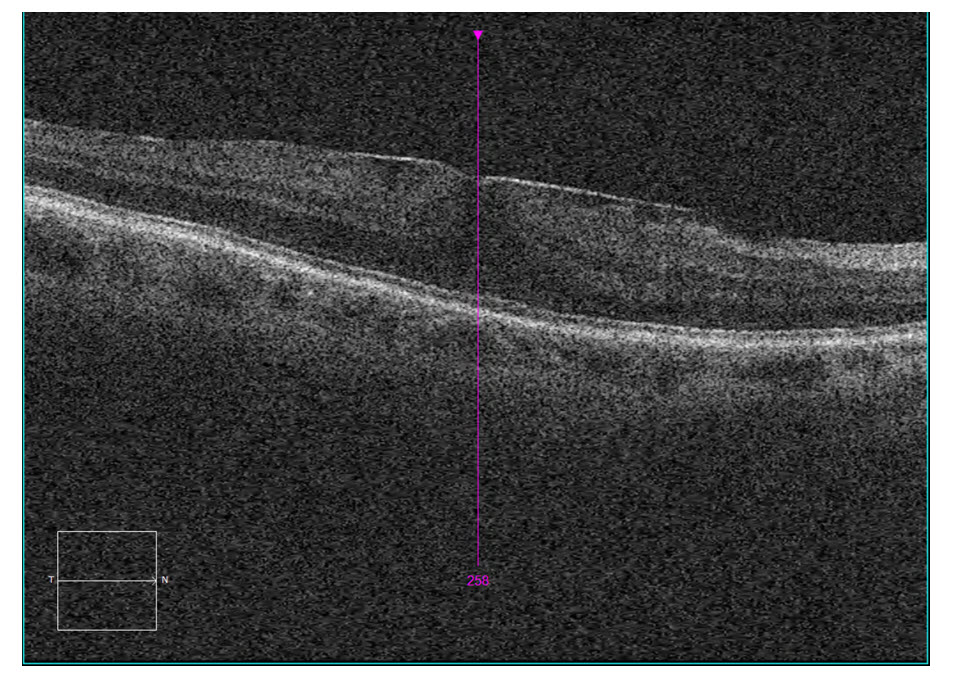
1. A patient presents with an Epiretinal Membrane OD that is stable compared to last year. You decide to monitor at this time OD. What 99XXX level would you code?
a. 99212
b. 99213
c. 99214
2. Last week you Rx’ed Latanoprost qhs OU for Glaucoma. The patient returns today with an allergic reaction to BAK. You discontinue Latanprost OU and Rx Zioptan qhs OU. What 99XXX level would you code?
a. 99212
b. 99213
c. 99214
3. You see a patient back for a Meibomian Gland Dysfunction OU & Keratoconjunctivitis Sicca OU check. Diagnosis 1: Meibomian Gland Dysfunction (Chronic) OU and you restart Scrubs, Hot Compresses and Omega 3 Vitamins. Diagnosis 2: Keratoconjunctivitis Sicca (Chronic) OU and you continue Preservative Free Artificial Tears QID OU. What 99XXX level would you code?
a. 99212
b. 99213
c. 99214
4. You see a patient back for a Meibomian Gland Dysfunction OU & Keratoconjunctivitis Sicca OU check. Diagnosis 1: Meibomian Gland Dysfunction (Chronic) OU and you restart Scrubs, Hot Compresses and Omega 3 Vitamins. Diagnosis 2: Keratoconjunctivitis Sicca (Chronic) OU and you Rx Lifitegrast BID OU. What 99XXX level would you code?
a. 99212
b. 99213
c. 99214
5. A patient presents with a Cataract OD that has worsened. You refer the patient for cataract surgery OD. What 99XXX level would you code?
a. 99212
b. 99213
c. 99214
 Scott R. Moscow, OD, is the Clinical Director of Roswell Eye Clinic in Roswell, Ga. To contact him: scott@roswelleyeclinic.com
Scott R. Moscow, OD, is the Clinical Director of Roswell Eye Clinic in Roswell, Ga. To contact him: scott@roswelleyeclinic.com

























